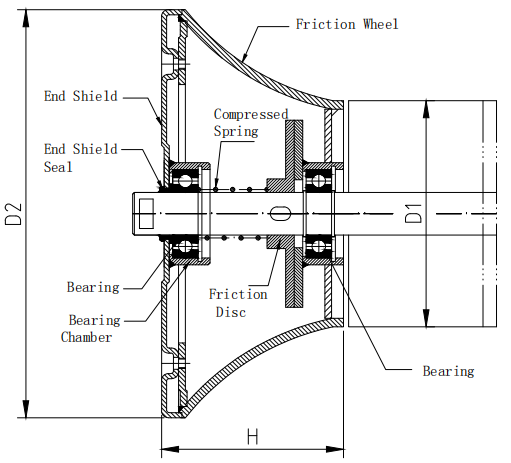 Afrikaans
Afrikaans  Albanian
Albanian  Amharic
Amharic  Arabic
Arabic  Armenian
Armenian  Azerbaijani
Azerbaijani  Basque
Basque  Belarusian
Belarusian  Bengali
Bengali  Bosnian
Bosnian  Bulgarian
Bulgarian  Catalan
Catalan  Cebuano
Cebuano  Corsican
Corsican  Croatian
Croatian  Czech
Czech  Danish
Danish  Dutch
Dutch  English
English  Esperanto
Esperanto  Estonian
Estonian  Finnish
Finnish  French
French  Frisian
Frisian  Galician
Galician  Georgian
Georgian  German
German  Greek
Greek  Gujarati
Gujarati  Haitian Creole
Haitian Creole  hausa
hausa  hawaiian
hawaiian  Hebrew
Hebrew  Hindi
Hindi  Miao
Miao  Hungarian
Hungarian  Icelandic
Icelandic  igbo
igbo  Indonesian
Indonesian  irish
irish  Italian
Italian  Japanese
Japanese  Javanese
Javanese  Kannada
Kannada  kazakh
kazakh  Khmer
Khmer  Rwandese
Rwandese  Korean
Korean  Kurdish
Kurdish  Kyrgyz
Kyrgyz  Lao
Lao  Latin
Latin  Latvian
Latvian  Lithuanian
Lithuanian  Luxembourgish
Luxembourgish  Macedonian
Macedonian  Malgashi
Malgashi  Malay
Malay  Malayalam
Malayalam  Maltese
Maltese  Maori
Maori  Marathi
Marathi  Mongolian
Mongolian  Myanmar
Myanmar  Nepali
Nepali  Norwegian
Norwegian  Norwegian
Norwegian  Occitan
Occitan  Pashto
Pashto  Persian
Persian  Polish
Polish  Portuguese
Portuguese  Punjabi
Punjabi  Romanian
Romanian  Russian
Russian  Samoan
Samoan  Scottish Gaelic
Scottish Gaelic  Serbian
Serbian  Sesotho
Sesotho  Shona
Shona  Sindhi
Sindhi  Sinhala
Sinhala  Slovak
Slovak  Slovenian
Slovenian  Somali
Somali  Spanish
Spanish  Sundanese
Sundanese  Swahili
Swahili  Swedish
Swedish  Tagalog
Tagalog  Tajik
Tajik  Tamil
Tamil  Tatar
Tatar  Telugu
Telugu  Thai
Thai  Turkish
Turkish  Turkmen
Turkmen  Ukrainian
Ukrainian  Urdu
Urdu  Uighur
Uighur  Uzbek
Uzbek  Vietnamese
Vietnamese  Welsh
Welsh  Bantu
Bantu  Yiddish
Yiddish  Yoruba
Yoruba  Zulu
Zulu Benefits of Using Rubber Lagging on Conveyor Pulley Systems for Enhanced Performance
The Importance of Rubber Lagging for Conveyor Pulleys
Conveyor systems are integral to various industries, including manufacturing, mining, and logistics. One critical component of these systems is the conveyor pulley, which plays a vital role in the transportation of materials. To enhance the performance and longevity of these pulleys, rubber lagging has emerged as a popular solution. In this article, we will explore the significance of rubber lagging for conveyor pulleys, its benefits, and the considerations for its application.
What is Rubber Lagging?
Rubber lagging refers to the application of a layer of rubber material on the surface of a conveyor pulley. This lagging serves multiple purposes, primarily aimed at improving the efficiency and durability of conveyor systems. It can be applied to various types of pulleys, including head pulleys, tail pulleys, and snub pulleys, depending on the specific requirements of the conveyor system in use.
Advantages of Rubber Lagging
1. Enhanced Friction Coefficient One of the primary benefits of rubber lagging is its ability to provide a better friction coefficient between the pulley and the conveyor belt. This enhanced friction results in improved traction, which helps to reduce slippage. By minimizing belt slippage, rubber lagging contributes to smoother operation and greater efficiency in material handling.
2. Wear Resistance Rubber is well-known for its wear-resistant properties. By adding rubber lagging to a conveyor pulley, the pulley itself is protected from the abrasion caused by the constant movement and grinding of materials being transported. This protective layer effectively extends the lifespan of the pulley, reducing maintenance costs and downtime associated with pulley replacement.
3. Vibration Dampening The installation of rubber lagging can help in dampening vibrations that are often generated during the operation of conveyor systems. Excessive vibrations can lead to material spillage, noise pollution, and even mechanical failures. Rubber lagging cushions these vibrations, ensuring a quieter and more stable operation.
4. Corrosion Resistance Many industrial environments expose equipment to harsh elements, including moisture, chemicals, and extreme temperatures. Rubber lagging helps to create a barrier that protects the pulley from corrosive substances. Additionally, it minimizes the risk of rust formation on metal pulleys, further enhancing durability.
rubber lagging for conveyor pulley

5. Improved Belt Life With better grip, reduced slippage, and lower wear and tear on both the pulley and the belt, rubber lagging can significantly increase the operational life of the conveyor belt itself. A longer belt lifespan translates to lower replacement costs and reduced frequency of downtime for belt changes.
Considerations for Rubber Lagging Application
When considering rubber lagging for conveyor pulleys, several factors must be assessed to ensure optimal performance
- Type of Material The choice of rubber material is crucial. Different applications may require varying degrees of hardness, elasticity, and resistance to specific environmental conditions. It is essential to choose a rubber material that aligns with the operational requirements of the conveyor system.
- Lagging Thickness The thickness of the rubber lagging should be selected based on the application's demands. Thicker lagging can provide increased wear resistance but may also affect the pulley’s balance and overall efficiency. It is essential to strike a balance between durability and performance.
- Installation Technique Proper installation of rubber lagging is vital for achieving the desired benefits. Poor installation can lead to issues such as peeling or delamination. Engaging experienced professionals for installation helps ensure that the lagging is applied correctly.
Conclusion
In summary, rubber lagging is a valuable addition to conveyor pulleys that enhances their performance, durability, and overall effectiveness. By improving traction, reducing wear, and providing protection against environmental hazards, rubber lagging contributes significantly to the efficiency of conveyor systems. As industries continue to prioritize operational efficiency and reduce maintenance costs, the implementation of rubber lagging on conveyor pulleys will undoubtedly remain a critical practice in material handling applications. Investing in quality rubber lagging can pay significant dividends in terms of equipment longevity, operational effectiveness, and cost savings.
-
Taper Centering Idler Set for Conveyor SystemsNewsJun.25,2025
-
Small Idler Rollers for Industrial ConveyorsNewsJun.25,2025
-
Guide Training Idler Set for Conveyor MaintenanceNewsJun.25,2025
-
Friction Offset Idler Set for Industrial UseNewsJun.25,2025
-
Double-Center-Roller Idler AlignmentNewsJun.25,2025
-
Channel Inset Impact Troughing Idler Set for Heavy LoadsNewsJun.25,2025





























